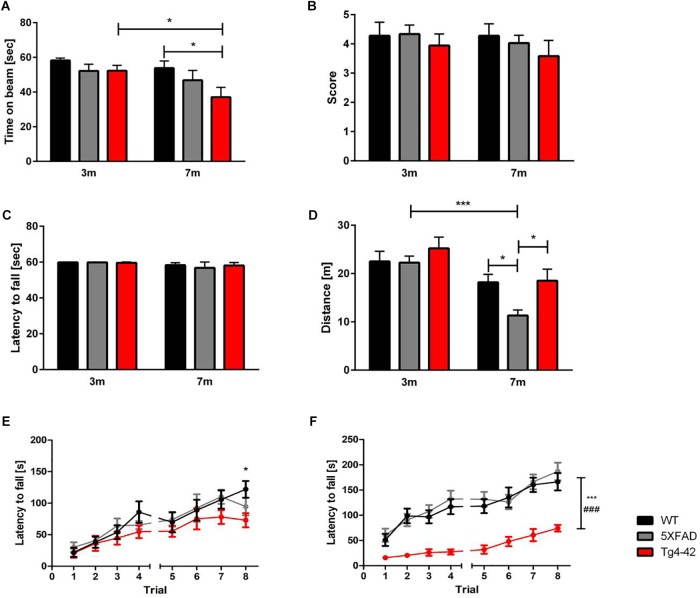FIGURE 2.
Motor deficits in aged Tg4-42 mice. (A) Tg4-42 mice showed age-dependent motor deficits in the balance beam. 5XFAD mice displayed no deficits in the balance beam. Tg4-42 and 5XFAD mice performed similar to same-aged wild-type control mice in the (B) string suspension task and (C) inverted grip task. (D) 5XFAD mice displayed an age-dependent decreased distance traveled in the Open Field task. Seven-month-old 5XFAD mice traveled significantly less than same-aged Tg4-42 and wild-type mice. (E) Young Tg4-42 and 5XFAD mice showed a similar latency to fall on the accelerating rotarod on trials 1–7. On the last trial of the test Tg4-42 mice performed worse than same-aged wild-type mice. (F) Aged Tg4-42 mice showed a decreased performance on the accelerating rotarod compared to same-aged wild-type and 5XFAD mice. Two-way repeated measures ANOVA, vs. 5XFAD ###p < 0.001; vs. WT ∗∗∗p < 0.001; ∗p < 0.05; n = 9–15 per group, data presented as mean ± SEM; WT, wild-type; m, month.

